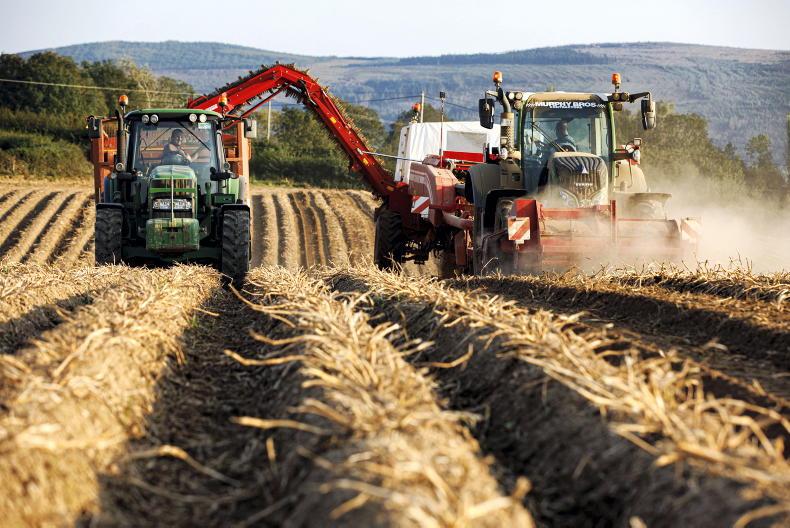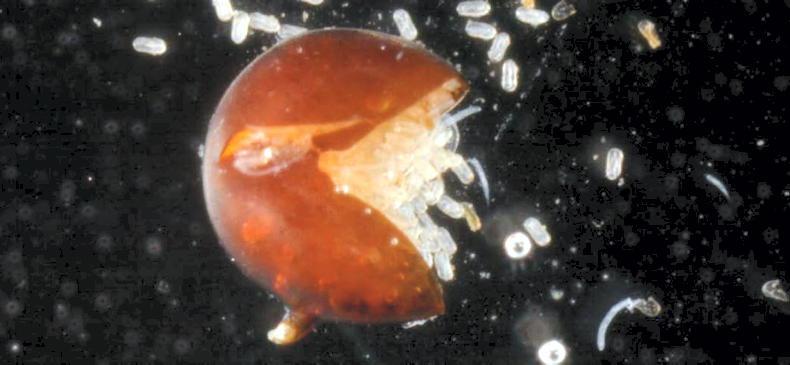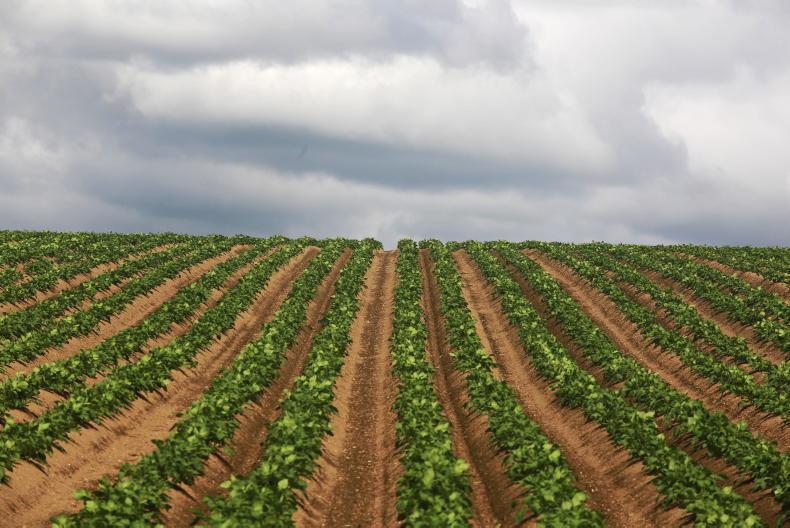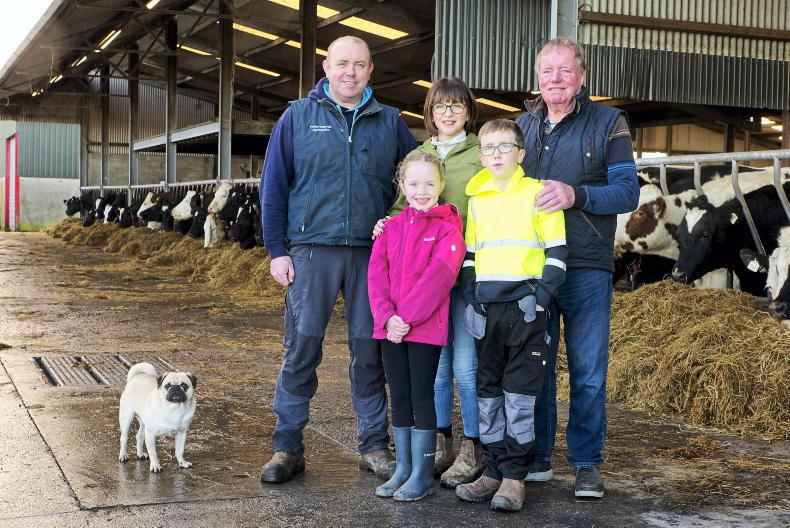Replacing older plant varieties with better-performing newer varieties is an important aspect of increasing productivity and profitability, and essential in responding to changes in consumer preferences, policy and the environment.
Potato cyst nematodes (PCN) are increasingly problematic where potatoes are intensively grown.
Until recently, very few potato varieties have been available for commercial production with resistance to both species of the pest, Globodera pallida and Globodera rostochiensis.
Teagasc and IPM Potato Group have been partners in developing new potato varieties with better pest and disease resistance since the 1960s.
Several years of research and development work in genome-based breeding are starting to deliver new commercial potato varieties with high levels of resistance to both PCN species.
The recently released variety Buster is the first of these.
A changing climate
It could be argued that breeding new potato varieties has never been more important.
Most climate-change scenarios predict a more challenging growing environment for potatoes in Ireland in the future.
In addition, EU policy, driven by consumer demand, is driving both the removal of plant protection products and an eventual reduction of their use by up to 50%. Control of PCN has already been affected, with many of the more effective active ingredients lost in the ongoing re-registration process.
Control of PCN has already been affected
The expectation is that, for PCN and other pests and diseases, the future of potato production will be more heavily reliant on integrated pest management approaches, a central plank of which is the use of genetically resistant varieties.
PCN is a significant problem in potato production worldwide and is a quarantine notifiable pest under the EU PCN directive. Although occurring in patches in fields, PCN infestations can reduce yields by up to 80%.
Over time, tight rotations coupled with the use of susceptible varieties, supported by the widespread use of soil-applied nematicides, have led to a large increase in the infected area in intensive production regions in the UK and Northern Europe.
In many such areas in Europe, infestation rates are often in excess of 50% of fields tested, often with the white PCN G. pallida dominating the population.
In Ireland, due to generally longer rotations, PCN infection rates are about 15% of land tested, with the dominant species being the golden PCN, G. rostochiensis. G. pallida is present at a much lower level and some mixed populations have also been detected.
Seed potato production is prohibited in infected land throughout Europe. In Ireland, growing ware potatoes in infected land is also prohibited in the absence of an official control programme aiming at least at the suppression of PCN.
Resistance breeding
Resistance breeding in potatoes has mainly focused on late blight and PCN. Resistance genes (R-genes) from wild and cultivated species from central and South America have been bred into the modern cultivated potato since the 1960s.
Resistance to PCN was an early success story. Maris Piper and Cara were among the first varieties containing the H1 gene conferring complete resistance to G. rostochiensis. They were released to combat emerging nematode infestations in the UK and the Netherlands in the 1970s.
Widespread use of H1 resistant varieties controlled and reduced G. rostochiensis infestations. However, another species of nematode, G. pallida, emerged to fill the niche left by G. rostochiensis.
Unfortunately, while the H1 gene confers complete control of G. rostochiensis, no single gene confers complete resistance to G. pallida.

PCN infestations can reduce yields by up to 80%.
This species often exists as complex populations in the field and resistance is characterised by partially effective genes, several of which have been bred into varieties since the 1960s.
Gene stacking
In the Teagasc/IPM Potato Group breeding programme, we decided to adopt an approach called R-gene stacking to overcome this problem. In this approach, multiple resistance genes are brought together in potential varieties by crossing parents containing individual genes, and using these as parents for subsequent generations.
Collections of partially effective genes often confer a stronger level of resistance, a phenomenon geneticists call additivity.

PCN cyst split to reveal eggs and juveniles. Source AHDB
However, breeding a variety is already a 12- to 15-year process. Stacking multiple genes in this way means it can take decades to produce a successful variety. One way to speed this process up is via Marker Assisted Selection (MAS), in which genomics-based technology is used to identify the presence of target genes in parents and progeny.
Then came Buster
The recently released maincrop potato variety Buster was the first variety to come from this strategic breeding programme. Buster has an attractive yellow skin and light yellow flesh colour, is oval in shape, and, with dry matter of 18%, is suitable for table and baker production.
It is the result of three separate rounds of crossing, initiated in 2004, during which MAS was used to combine four partially effective resistance genes to G. pallida, and the H1 gene into a single, high-performing variety.
Extensive experience gained with the technology over the last 15 years has allowed us to develop “rapid cycle” breeding approaches to use in conjunction with MAS.
This meant that we could produce a variety containing multiple resistance genes in one-third of the time it would have taken using conventional methods. Buster scores a nine for resistance to both species of PCN, the highest score possible on the rating scale.
Bred to last
Variety resistance can suffer from several challenges, including resistance breakdown due to pathogen evolution and effectiveness against some pathogen populations but not others. Buster has features that address both of these issues.
Firstly, combining multiple genes has been shown to decrease the ability of pests and diseases to easily overcome the resulting resistance, increasing its longevity; Buster’s array of resistance genes should make rapid breakdown more unlikely.
Secondly, the combination of the two strongest-effect resistance genes present in Buster has previously been tested against five G. pallida populations. It was found to be highly effective against all of them, meaning Buster should be broadly effective against diverse field populations.
Buster may also confer additional benefits by reducing PCN infestations in the soils for subsequent crops. It is an indeterminate high-yielding variety with low nitrogen requirement and an extensive root system.
This makes it likely that it will stimulate a higher hatch of nematodes, which will attack the root system, but will be unable to complete their lifecycle due to the variety resistance.
This has the effect of reducing PCN levels in the soil. Recent results from in UK suggest that this might be the case for Buster although further work is required to confirm this (Figure 1).

Figure 1
Buster could provide a viable sustainable option to reduce PCN infestation where cultivation of ware potatoes is allowed and prevent further spread in areas where PCN is emerging.
Future is bright
MAS is now routinely used in the Teagasc/IPM Potato Group breeding programme and, in addition to PCN, is currently being used to track the presence of over 20 genes conferring resistance to diseases including late blight, PVY and wart disease.
This is already bearing fruit, and varieties such as the recently released Java, which combines resistance to G. rostochiensis, late blight and wart disease show the potential for MAS to develop multi-disease and pest resistant varieties.
For the Irish production environment, late blight is an obvious priority, but breeding varieties with durable blight resistance is even more challenging than PCN, since resistance breakdown occurs more rapidly in the interaction between Phytophthora infestans and potato.
Resistance gene stacking is also being used to develop varieties exhibiting durable, broad-spectrum resistance to blight.
Replacing older plant varieties with better-performing newer varieties is an important aspect of increasing productivity and profitability, and essential in responding to changes in consumer preferences, policy and the environment.
Potato cyst nematodes (PCN) are increasingly problematic where potatoes are intensively grown.
Until recently, very few potato varieties have been available for commercial production with resistance to both species of the pest, Globodera pallida and Globodera rostochiensis.
Teagasc and IPM Potato Group have been partners in developing new potato varieties with better pest and disease resistance since the 1960s.
Several years of research and development work in genome-based breeding are starting to deliver new commercial potato varieties with high levels of resistance to both PCN species.
The recently released variety Buster is the first of these.
A changing climate
It could be argued that breeding new potato varieties has never been more important.
Most climate-change scenarios predict a more challenging growing environment for potatoes in Ireland in the future.
In addition, EU policy, driven by consumer demand, is driving both the removal of plant protection products and an eventual reduction of their use by up to 50%. Control of PCN has already been affected, with many of the more effective active ingredients lost in the ongoing re-registration process.
Control of PCN has already been affected
The expectation is that, for PCN and other pests and diseases, the future of potato production will be more heavily reliant on integrated pest management approaches, a central plank of which is the use of genetically resistant varieties.
PCN is a significant problem in potato production worldwide and is a quarantine notifiable pest under the EU PCN directive. Although occurring in patches in fields, PCN infestations can reduce yields by up to 80%.
Over time, tight rotations coupled with the use of susceptible varieties, supported by the widespread use of soil-applied nematicides, have led to a large increase in the infected area in intensive production regions in the UK and Northern Europe.
In many such areas in Europe, infestation rates are often in excess of 50% of fields tested, often with the white PCN G. pallida dominating the population.
In Ireland, due to generally longer rotations, PCN infection rates are about 15% of land tested, with the dominant species being the golden PCN, G. rostochiensis. G. pallida is present at a much lower level and some mixed populations have also been detected.
Seed potato production is prohibited in infected land throughout Europe. In Ireland, growing ware potatoes in infected land is also prohibited in the absence of an official control programme aiming at least at the suppression of PCN.
Resistance breeding
Resistance breeding in potatoes has mainly focused on late blight and PCN. Resistance genes (R-genes) from wild and cultivated species from central and South America have been bred into the modern cultivated potato since the 1960s.
Resistance to PCN was an early success story. Maris Piper and Cara were among the first varieties containing the H1 gene conferring complete resistance to G. rostochiensis. They were released to combat emerging nematode infestations in the UK and the Netherlands in the 1970s.
Widespread use of H1 resistant varieties controlled and reduced G. rostochiensis infestations. However, another species of nematode, G. pallida, emerged to fill the niche left by G. rostochiensis.
Unfortunately, while the H1 gene confers complete control of G. rostochiensis, no single gene confers complete resistance to G. pallida.

PCN infestations can reduce yields by up to 80%.
This species often exists as complex populations in the field and resistance is characterised by partially effective genes, several of which have been bred into varieties since the 1960s.
Gene stacking
In the Teagasc/IPM Potato Group breeding programme, we decided to adopt an approach called R-gene stacking to overcome this problem. In this approach, multiple resistance genes are brought together in potential varieties by crossing parents containing individual genes, and using these as parents for subsequent generations.
Collections of partially effective genes often confer a stronger level of resistance, a phenomenon geneticists call additivity.

PCN cyst split to reveal eggs and juveniles. Source AHDB
However, breeding a variety is already a 12- to 15-year process. Stacking multiple genes in this way means it can take decades to produce a successful variety. One way to speed this process up is via Marker Assisted Selection (MAS), in which genomics-based technology is used to identify the presence of target genes in parents and progeny.
Then came Buster
The recently released maincrop potato variety Buster was the first variety to come from this strategic breeding programme. Buster has an attractive yellow skin and light yellow flesh colour, is oval in shape, and, with dry matter of 18%, is suitable for table and baker production.
It is the result of three separate rounds of crossing, initiated in 2004, during which MAS was used to combine four partially effective resistance genes to G. pallida, and the H1 gene into a single, high-performing variety.
Extensive experience gained with the technology over the last 15 years has allowed us to develop “rapid cycle” breeding approaches to use in conjunction with MAS.
This meant that we could produce a variety containing multiple resistance genes in one-third of the time it would have taken using conventional methods. Buster scores a nine for resistance to both species of PCN, the highest score possible on the rating scale.
Bred to last
Variety resistance can suffer from several challenges, including resistance breakdown due to pathogen evolution and effectiveness against some pathogen populations but not others. Buster has features that address both of these issues.
Firstly, combining multiple genes has been shown to decrease the ability of pests and diseases to easily overcome the resulting resistance, increasing its longevity; Buster’s array of resistance genes should make rapid breakdown more unlikely.
Secondly, the combination of the two strongest-effect resistance genes present in Buster has previously been tested against five G. pallida populations. It was found to be highly effective against all of them, meaning Buster should be broadly effective against diverse field populations.
Buster may also confer additional benefits by reducing PCN infestations in the soils for subsequent crops. It is an indeterminate high-yielding variety with low nitrogen requirement and an extensive root system.
This makes it likely that it will stimulate a higher hatch of nematodes, which will attack the root system, but will be unable to complete their lifecycle due to the variety resistance.
This has the effect of reducing PCN levels in the soil. Recent results from in UK suggest that this might be the case for Buster although further work is required to confirm this (Figure 1).

Figure 1
Buster could provide a viable sustainable option to reduce PCN infestation where cultivation of ware potatoes is allowed and prevent further spread in areas where PCN is emerging.
Future is bright
MAS is now routinely used in the Teagasc/IPM Potato Group breeding programme and, in addition to PCN, is currently being used to track the presence of over 20 genes conferring resistance to diseases including late blight, PVY and wart disease.
This is already bearing fruit, and varieties such as the recently released Java, which combines resistance to G. rostochiensis, late blight and wart disease show the potential for MAS to develop multi-disease and pest resistant varieties.
For the Irish production environment, late blight is an obvious priority, but breeding varieties with durable blight resistance is even more challenging than PCN, since resistance breakdown occurs more rapidly in the interaction between Phytophthora infestans and potato.
Resistance gene stacking is also being used to develop varieties exhibiting durable, broad-spectrum resistance to blight.


















SHARING OPTIONS